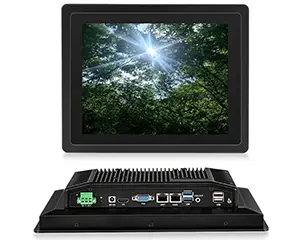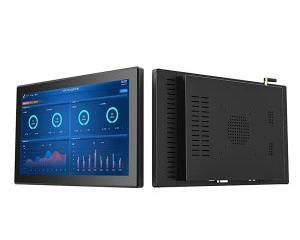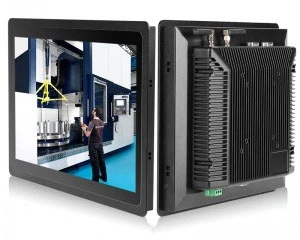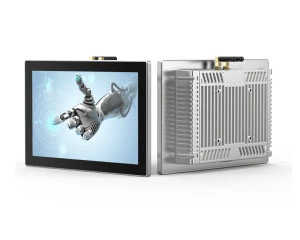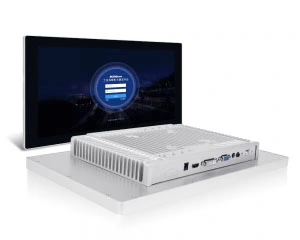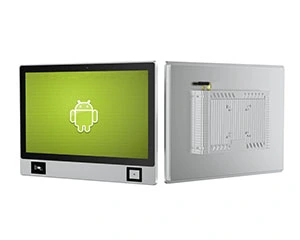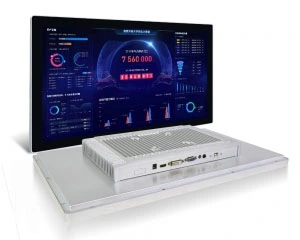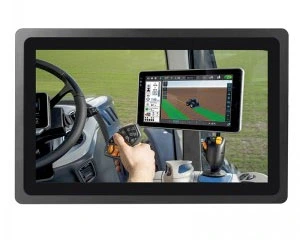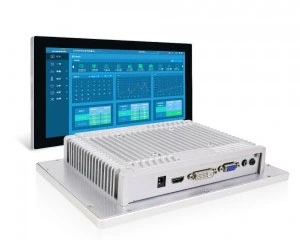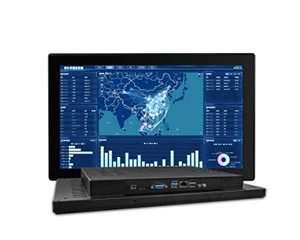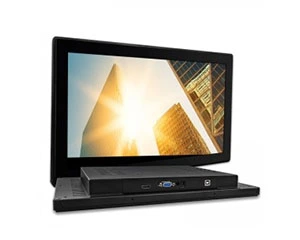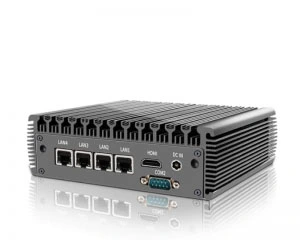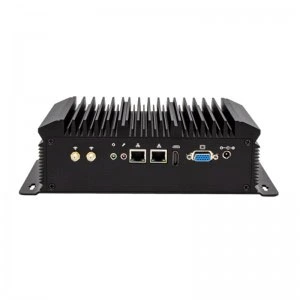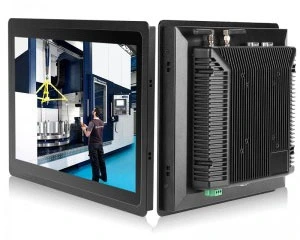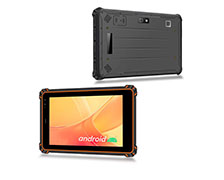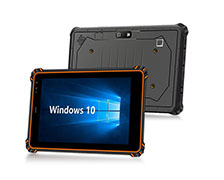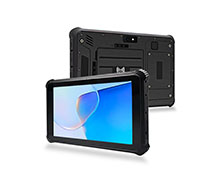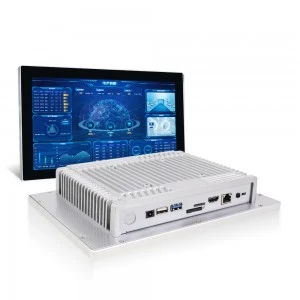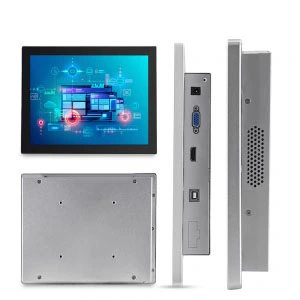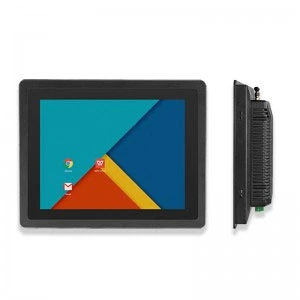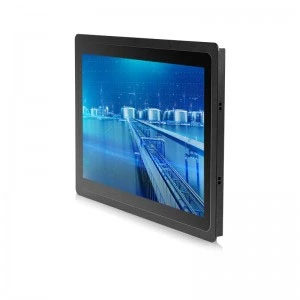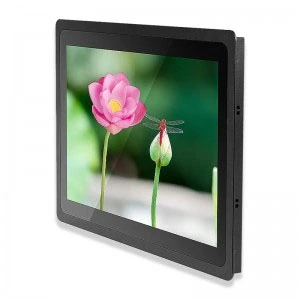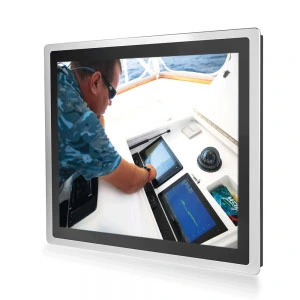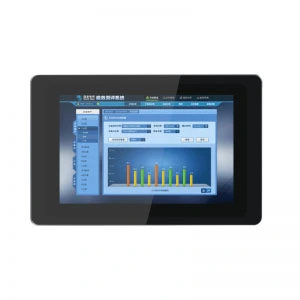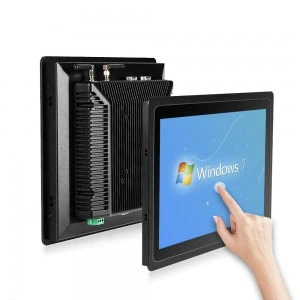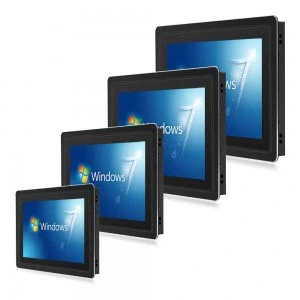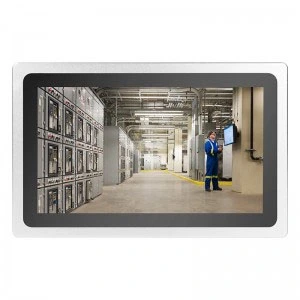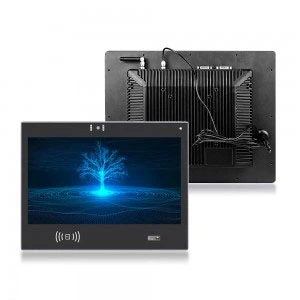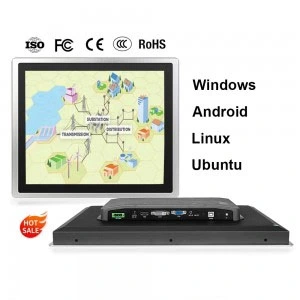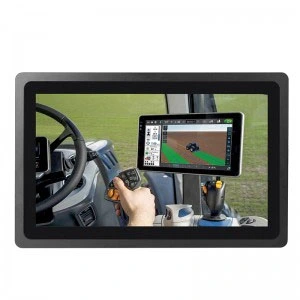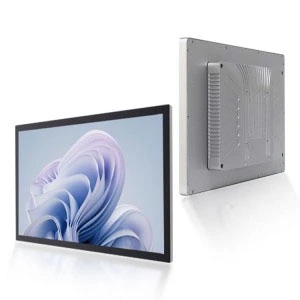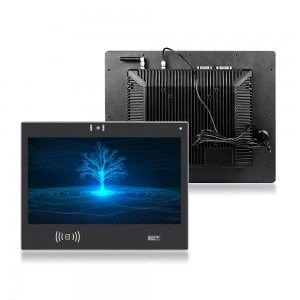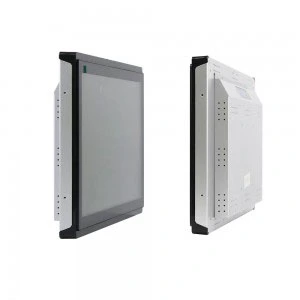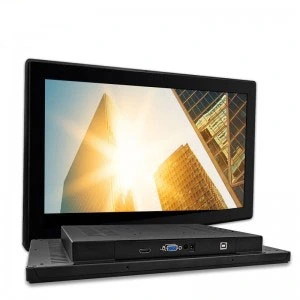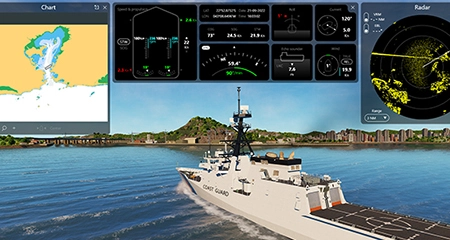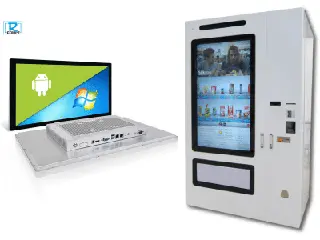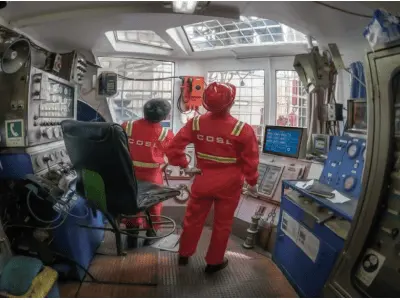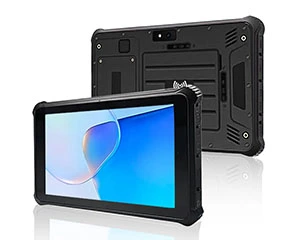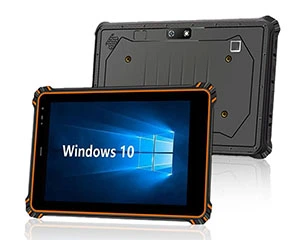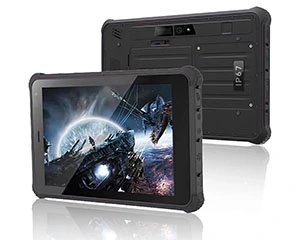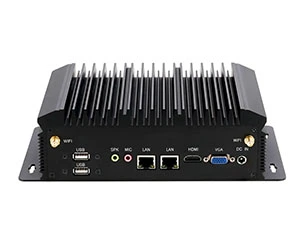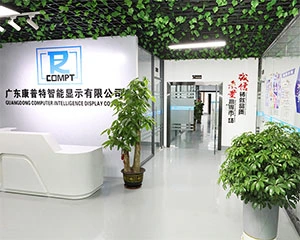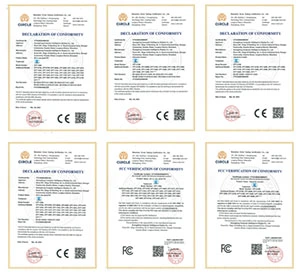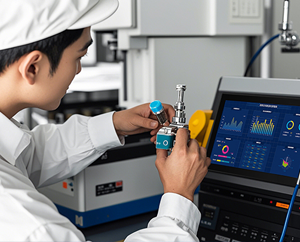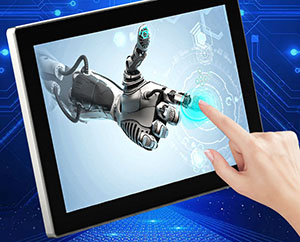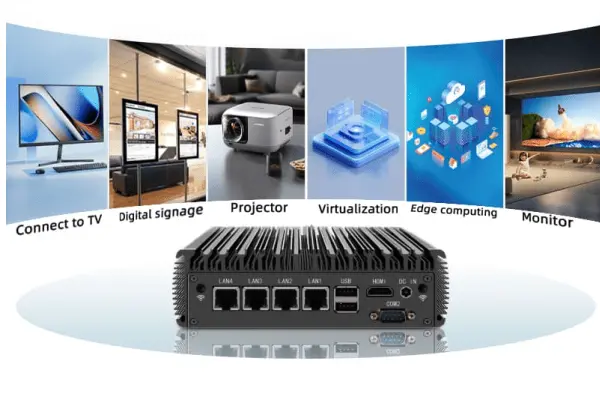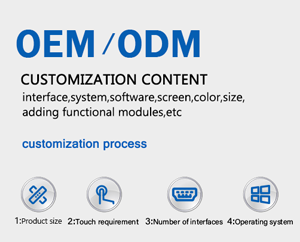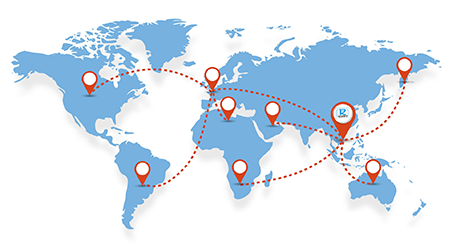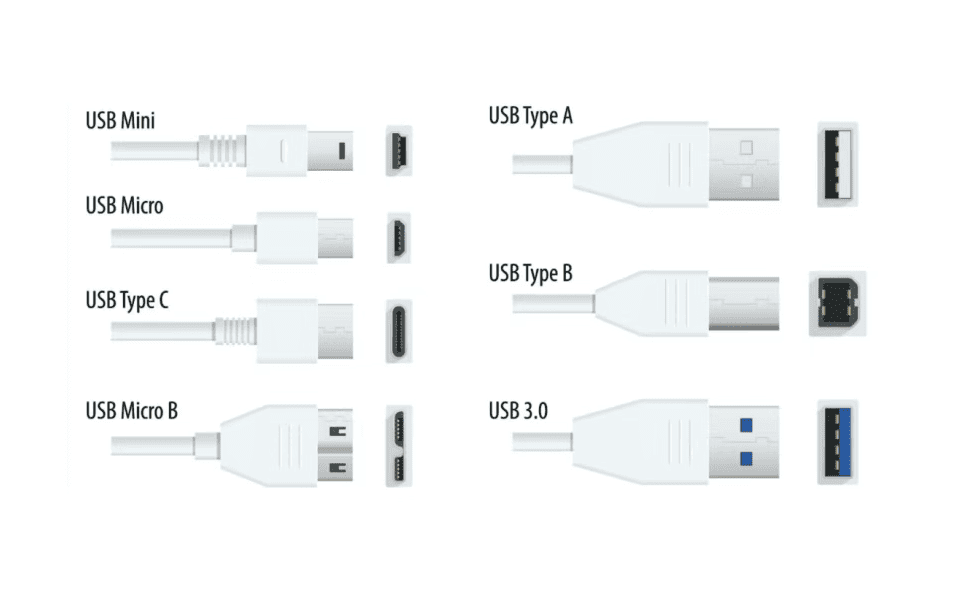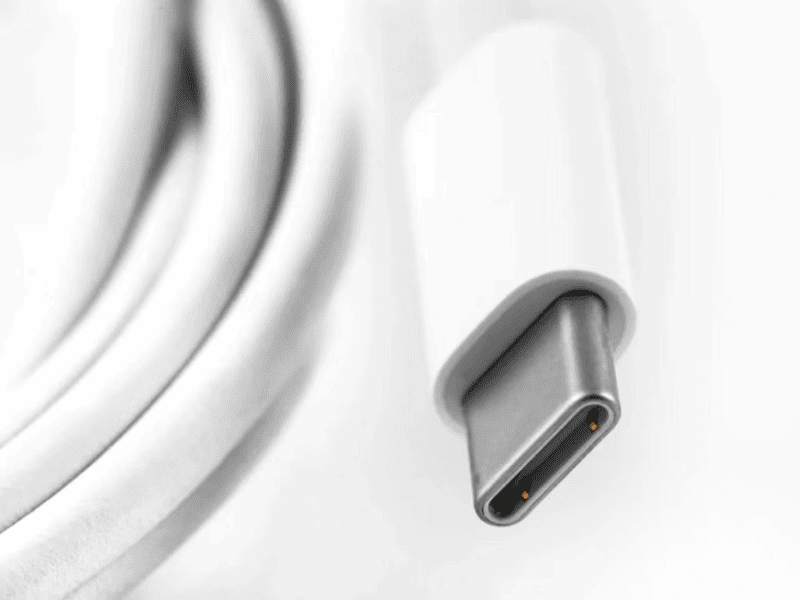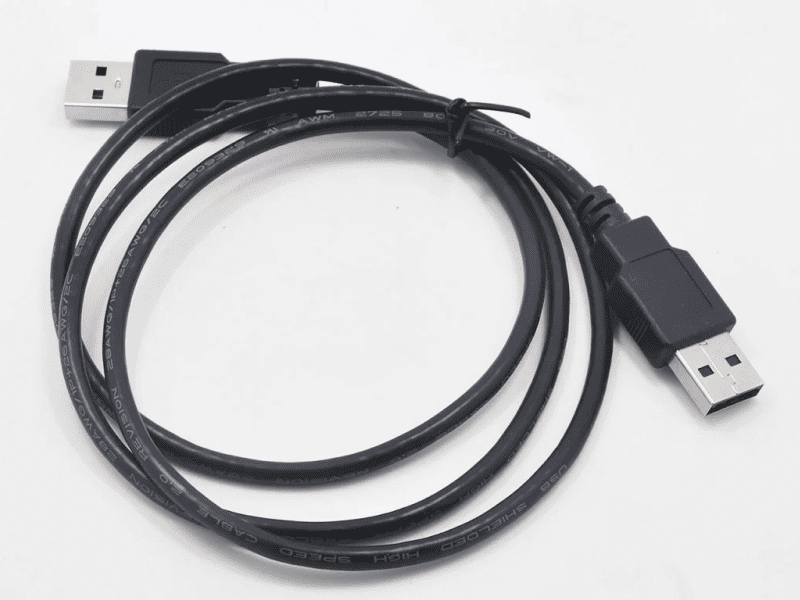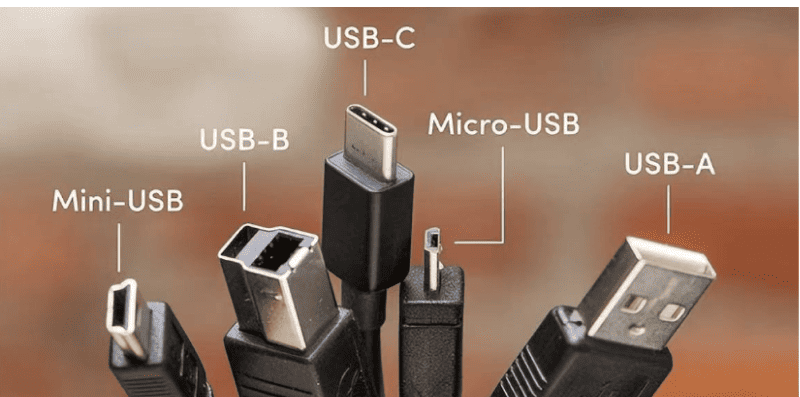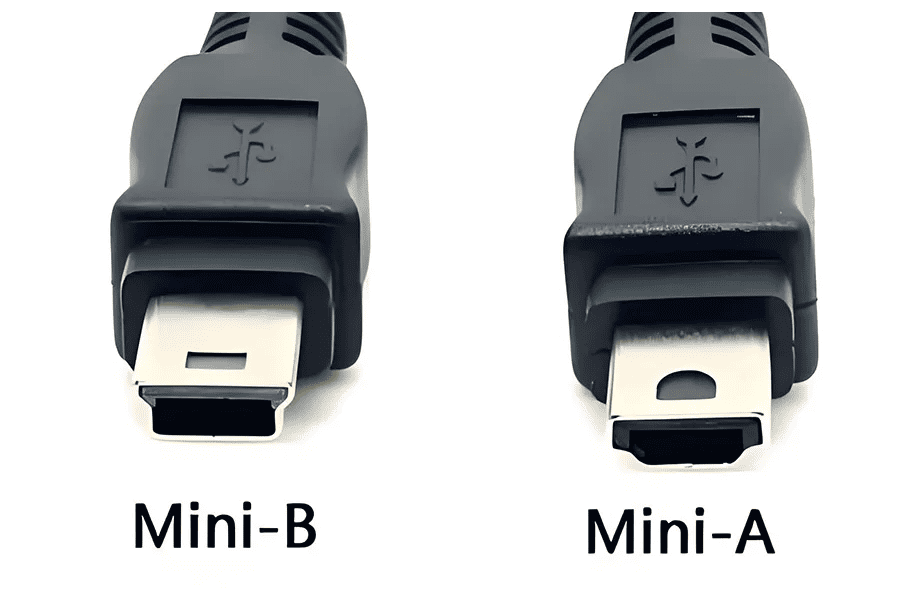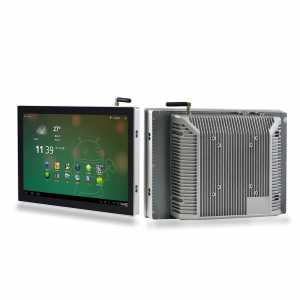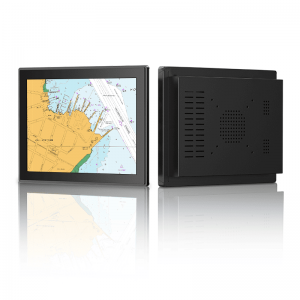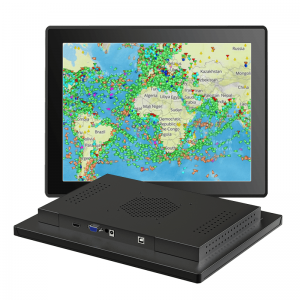Why USB Matters More Than Ever?
We rely on fast data transfer every single day – and USB is what makes it happen. From the old-school USB 1.0 to today’s blazing-fast USB 3.2 Gen 2×2 and USB4, each upgrade brings faster speeds, better power delivery, and smarter connectivity.
But the real game-changer? USB Type-C. It’s not just a new shape—it’s the one-cable solution for data, video, audio, and charging. No more juggling different ports. No more slow transfers. Just one universal standard for everything.
USB is the backbone of modern tech. And if you’re still using outdated ports, you’re missing out.
USB Types Explained: USB-A, USB-B, Micro USB, USB-C, and More
USB ports and cables come in different shapes and sizes, each designed for specific needs. Here’s a quick breakdown:
-
USB-A – The classic rectangular plug found on computers, keyboards, and flash drives.
-
USB-B – Square or trapezoidal, often used for printers and scanners.
-
Mini USB – Smaller, mostly for older cameras and portable hard drives.
-
Micro USB – Common in older smartphones and small devices.
-
USB-C – The modern, reversible connector for fast charging, data transfer, and connecting hubs (works with USB 3.1, USB 3.2, USB4, and USB4 V2).
For cables and adapters, you’ll see terms like:
-
USB 3.1 / 3.2 / USB4 – Different speed standards (faster data transfer).
-
USB-C to USB-A / USB-C to USB-C – Lets you connect new and old devices.
USB-C is becoming the go-to choice because it’s versatile, reversible, and supports the latest tech. Whether you need a cable for charging, transferring files, or expanding your setup, there’s a USB type for you!
What is USB 3.1 Type-C?
USB 3.1 is an upgraded version of USB 3.0, offering faster data transfer speeds (up to 10Gbps) and improved power delivery. It comes in two variants:
USB 3.1 Gen 1: 5Gbps (same as USB 3.0)
USB 3.1 Gen 2: 10Gbps
USB Type-C, on the other hand, refers to the physical connector design. It’s reversible (no wrong way to plug it in), compact, and highly versatile—supporting not just USB 3.1 but also USB 3.0, 3.2, USB4, and even Thunderbolt 3/4.
When combined as USB 3.1 Type-C, you get:
High-speed transfers: Up to 10Gbps (Gen 2 standard).
Slim design: Tiny footprint (8.3mm × 2.5mm) for modern devices.
Reversible plug: No frustration with upside-down cables.
Broad compatibility: Works with PCs, smartphones, consoles, storage, and peripherals.
This combo delivers convenience, performance, and future-proof connectivity.
What is USB A?
USB A (also written as USB-A or USB Type-A) is the classic rectangular connector you’ve probably used for years. Introduced in the mid-1990s, it became the standard port for computers, chargers, and many other devices.
You can recognize USB A by its flat, rectangular shape—and yes, it only fits one way (the top and bottom are different, so you often have to flip it to plug it in correctly). There are two main types:
Standard USB A (black/white): Found in older USB 1.0/2.0 devices.
USB 3.0 A (blue): Has extra pins inside for faster speeds.
Despite newer connectors like USB-C, USB A remains widely used because it’s so common and compatible with countless devices.
What is USB B?
USB B refers to the USB-B connector, a type of USB interface known for its durability and reliability. Unlike the flat, rectangular USB-A, the USB-B connector typically has a square or trapezoidal shape and is slightly larger in size, making it more robust. It supports both through-hole and surface mounting for secure connections. Due to its cost-effectiveness and sturdiness, USB-B is commonly used in peripherals like printers, scanners, monitors, and USB hubs.
While the square-shaped USB Type-B is less common, its electrical specifications are the same as USB-A. Overall, USB-B is designed for applications where a stronger, more reliable connection is needed, especially in devices where size isn’t a major constraint.
What is the data transfer speed of a USB B port?
The transfer speed of a USB B port depends on the USB version it supports:
USB 1.0: Supports two speeds—Low Speed (1.5 Mbps) and Full Speed (12 Mbps).
USB 2.0 (also called High Speed): Up to 480 Mbps.
USB 3.0 (also called SuperSpeed): Theoretical speed of 5 Gbps.
USB 3.1 Gen 2: Up to 10 Gbps.
Note: Actual transfer speeds may vary depending on factors like cable quality, device compatibility, and other environmental conditions.
What is USB-C?
USB-C (officially USB Type-C) is the latest USB connector shape, designed by the USB Implementers Forum (USB-IF) in 2014. Unlike older USB types, USB-C is sleek, reversible (no wrong way to plug it in!), and versatile—making it the go-to choice for modern devices.
Key Features of USB-C:
Compact & Reversible Design – Slimmer than older USB ports, perfect for thin smartphones, laptops, and tablets. No more struggling to plug it in the right way!
Fast Data Transfer – Supports USB 3.1, USB 3.2, USB4, and USB4 V2, with speeds up to 10Gbps (and even faster with newer standards).
High-Power Charging – Delivers up to 100W, enough to charge laptops, phones, and other power-hungry devices.
Multi-Functional – Not just for charging and data—it also supports video (DisplayPort) and super-fast Thunderbolt connections.
Why USB-C is Taking Over
Thanks to its speed, power, and convenience, USB-C is now mandatory for new portable devices in the EU (starting 2024 for phones, 2026 for laptops). While it’s already standard in consumer tech, industrial PCs are just starting to adopt it.
Remember: USB-C refers to the connector shape, not the speed standard (like USB 3.1 or USB4). But its flexibility means it can handle the latest and fastest USB tech—making it the ultimate all-in-one port!
What is Micro USB?
Micro USB is a compact version of the standard USB-A port, designed for portable devices like smartphones, power banks, e-readers, and GPS units. Introduced in 2007 by the OMTP (Open Mobile Terminal Platform), it became popular for its small size, durability (10,000 plug cycles), and versatility. Key features include:
Charging & Data: Supports USB 1.1/2.0 speeds for charging and file transfers.
Portability: Smaller than Mini USB, fitting slimmer devices.
Convenience: Works with car chargers and direct device-to-device connections.
Though newer standards exist, Micro USB remains widely used due to its reliability and compatibility.
USB 3.0 vs. USB 3.1 vs. USB 3.2: Key Differences Explained
USB 3.0, 3.1, and 3.2 are different generations of USB technology, each offering faster speeds and improved performance. Here’s a simple breakdown:
-
USB 3.0: The original version, with a max speed of 5Gbps (500MB/s). Commonly used for everyday devices like flash drives and keyboards.
-
USB 3.1 Gen 1: Essentially the same as USB 3.0 (5Gbps), just rebranded.
-
USB 3.1 Gen 2: Doubles the speed to 10Gbps (1250MB/s), ideal for HD video and fast file transfers.
-
USB 3.2 Gen 2×2: The fastest, reaching 20Gbps (2500MB/s) by using dual lanes (requires USB-C). Perfect for 4K video editing or high-speed storage.
Interface Types:
-
USB 3.0/3.1 Gen 1 often use Type-A (blue ports) or Type-B.
-
USB 3.1 Gen 2 and USB 3.2 mainly use Type-C, which supports faster speeds and reversible plugging.
Which One Should You Choose?
-
For basic needs (mice, keyboards, USB drives), USB 3.0 is fine.
-
For external SSDs or HD video, USB 3.1 Gen 2 (10Gbps) is a great upgrade.
-
For top-tier performance (e.g., NVMe SSDs, professional work), go for USB 3.2 Gen 2×2 (20Gbps)—just make sure your device supports it!
Always check your device’s specs, as speed depends on both the USB version and the port type (Type-A vs. Type-C).
USB Type-C vs. Other USB Ports: Key Differences Explained
USB Type-C (also called USB-C) is the modern, reversible connector replacing older USB ports like Type-A. Here’s how it compares:
-
Type-C vs. Type-A: USB Type-A is the traditional rectangular port (common on PCs and flash drives), while Type-C is smaller, reversible (no wrong side up), and supports faster charging/data transfer.
-
Speed & Performance: USB Type-C is just the physical port—real speed depends on the USB standard (e.g., USB 3.1, USB4). For example, a Type-C port with USB 3.1 can hit 10Gbps, much faster than older USB 3.0 Type-A.
-
Versatility: Type-C supports advanced features like video output (via DisplayPort Alt Mode) and Thunderbolt compatibility, making it ideal for modern laptops, phones, and accessories.
-
Thunderbolt vs. USB: Thunderbolt (used in Macs) offers even higher speeds and multi-device support but is pricier. Many Type-C ports now support Thunderbolt for pro-grade performance.
In short, USB Type-C is faster, more flexible, and future-proof compared to older USB types—making it the go-to choice for new devices.
How to Identify Your USB Type-C Version?
To determine your USB-C port’s version (e.g., USB 3.1, USB 3.2, USB4, etc.), you can use these easy methods:
Check the port markings:
Look for symbols like “SS” (SuperSpeed) or speed ratings (e.g., 5Gbps, 10Gbps, 20Gbps).
USB 3.x ports usually have 9 pins, while USB 2.0 has 4 pins.
Some manufacturers use blue coloring for USB 3.0 ports.
Check your device settings:
On Windows, open Device Manager and check the USB controller details.
Use third-party tools (e.g., USBDeview) to detect speed and version.
Review the manual or manufacturer specs:
The device’s user manual or official website often lists the USB version.
USB Types and Performance Explained
USB cables and ports come in different shapes (like USB-A, USB-B, Micro-USB, and USB-C) and performance levels (such as USB 2.0, USB 3.0, USB 3.1, USB 3.2, USB4, and USB4 v2). Understanding the difference between shape and speed is key to choosing the right cable for your needs.
USB started in 1996 with USB 1.0 (12 Mbps), followed by USB 2.0 (480 Mbps). Later versions got faster and more complex—USB 3.0 (5 Gbps), USB 3.1 (10 Gbps), USB 3.2 (20 Gbps), and now USB4 (up to 40 Gbps with USB4 v2). But with names like USB 3.2 Gen 2×2 or USB4 Version 2, it’s easy to get confused.
Key Points:
Shape: USB-A is the classic rectangular plug, USB-C is reversible and faster, and Micro-USB is common for older phones.
Speed: Newer versions (USB 3.0 and up) offer faster data transfer and better power delivery.
Compatibility: USB 3.0+ ports work with older USB 2.0 devices, but speed drops to the lowest supported standard.
USB Speeds Explained: From USB 1.0 to USB4
USB technology has evolved significantly, offering faster data transfer speeds with each new version. Below is a simple breakdown of USB speeds in Mbps (Megabits per second) and MB/s (Megabytes per second) for easy comparison.
| USB Version | Speed (Mbps) | Speed (MB/s) | Common Name |
|---|---|---|---|
| USB 1.0 / 1.1 | 1.5 / 12 | 0.18 / 1.5 | Low Speed / Full Speed |
| USB 2.0 | 480 | 60 | High Speed |
| USB 3.0 | 5,000 (5Gbps) | 640 | SuperSpeed (USB 3.1 Gen 1) |
| USB 3.1 Gen 2 | 10,000 (10Gbps) | 1,280 | SuperSpeed+ |
| USB 3.2 Gen 2×2 | 20,000 (20Gbps) | 2,560 | SuperSpeed 20Gbps |
| USB4 | 40,000 (40Gbps) | 5,000 | USB4 40Gbps |
Key Takeaways:
-
USB 2.0 is still common but much slower than newer versions.
-
USB 3.x (3.0, 3.1, 3.2) introduced “SuperSpeed” with 5Gbps to 20Gbps speeds.
-
USB4 is the fastest (40Gbps), often using USB Type-C for maximum performance.
This table helps you compare USB speeds easily—whether you’re transferring files, backing up data, or connecting peripherals.
EU’s USB-C Mandate: What You Need to Know
To reduce e-waste and improve compatibility, the EU now requires most electronics to use USB-C charging.
Timeline & Scope
| Device Type | Deadline | Details |
|---|---|---|
| Phones, tablets, cameras, etc. | 2024 | Small electronics must use USB-C. Non-compliant devices (e.g., Lightning iPhones) can’t be sold. |
| Laptops | 2026 | Larger devices get extra time, but many brands (like Apple) already switched. |
Key Points
-
Why? To cut clutter—USB-C universal charging reduces unused cables/adapters.
-
Who’s affected? Smartphones, headphones, game consoles, etc. (Exemptions: Smartwatches, tiny devices).
-
Global impact: Brands (e.g., Apple) are adopting USB-C worldwide to avoid separate EU/non-EU production.
Result: A single USB-C standard for most devices = simpler, greener tech.
Why This Works for Google Searches
-
Keyword-focused: “USB” appears naturally in headers and explanations.
-
Scannable: Bullets/table answer “when?” and “what devices?” quickly.
-
Global relevance: Highlights EU rules but ties to worldwide adoption (e.g., Apple’s shift).
-
Plain language: Avoids jargon (e.g., “OEM”) for broader readability.
Let me know if you’d tweak the tone or add specifics!
The power capabilities of USB
USB power capabilities are defined by the USB Power Delivery (USB-PD) standard, which is separate from USB version numbers (like USB 3.0, USB4, etc.). The latest USB-PD 3.1 allows:
-
Up to 240W via USB-C (enough for laptops, monitors, and gaming PCs).
-
Up to 100W via older USB-A ports.
This means:
-
A single USB-C cable can now power high-demand devices like desktop PCs or docks.
-
Power direction is flexible—e.g., a monitor can charge a laptop, or a charger can power a laptop through any USB-C port.
USB Power Standards Over Time
| USB Version | Max Power | Details |
|---|---|---|
| USB 2.0 | 2.5W (5V, 500mA) | Basic charging for phones. |
| USB 3.0 | 4.5W–7.5W (5V, 900mA–1.5A) | Slightly faster charging. |
| USB-C (with PD) | Up to 240W (USB-PD 3.1) | Powers laptops, monitors, and more. |
Why it matters:
-
Faster charging, fewer cables.
-
One universal standard for data and power.
Key Features:
✔ 240W support (USB-C PD 3.1) = charge almost anything.
✔ Backward compatible (works with older USB versions).
✔ Flexible power flow (devices can charge each other).
This makes USB the go-to for both data and high-power needs!
Notes on Approach:
-
Simplified technical jargon (e.g., “USB-PD 3.1″ instead of version-heavy details).
-
Table for clarity—users often search for power comparisons by USB version.
-
Highlighted USB-C’s 240W (a major upgrade users care about).
-
Mobile-friendly—short paragraphs + bullet points for readability.
The Application of USB in Industrial Equipment
USB (especially USB Type-C) is a game-changer for industrial devices, offering high-speed data transfer, power delivery, and rugged durability. COMPT’s industrial Panel PCs leverage USB Type-C with USB 3.1/USB 3.2/USB4 standards for superior performance in harsh environments.
Key Benefits of USB (Type-C) in Industrial Use
| Feature | Advantage | COMPT’s Application |
|---|---|---|
| High-Speed Data | Supports fast transfer (up to 20Gbps+ with USB 3.2/USB4) for cameras, scanners, and storage. | Connects to industrial cameras, barcode scanners, and SSDs seamlessly. |
| Single-Cable Solution | USB Type-C combines data + power + video (via Type-C to HDMI/USB 3.1 adapters). | Simplifies wiring in Panel PCs, reducing clutter. |
| Space-Saving Design | Compact reversible plug ideal for 7″–24″ industrial displays. | Fits slim Panel PCs & embedded systems without bulky ports. |
| Durability | Industrial-grade waterproof (IP65), dustproof, and wide-temperature (-10°C to 60°C) support. | Reliable in smart manufacturing, traffic control, and outdoor kiosks. |
| Easy Upgrades | Hot-swappable & backward-compatible with older USB standards. |
Why COMPT’s Industrial PCs Use USB Type-C?
Faster workflows – Quick data sync for logistics, quality control, and IoT sensors.
Fewer cables – One USB-C port replaces multiple connections (power + display + peripherals).
Future-proof – Ready for USB4 V2 (80Gbps) for next-gen industrial demands. From smart cabinets to automated production lines, USB Type-C ensures reliability, speed, and simplicity—making it the best choice for industrial computing.
How to Choose the Right USB Cable?
Whether you’re setting up an industrial Panel PC (like COMPT’s rugged models) or connecting everyday devices, picking the right USB cable ensures fast data transfer, stable power delivery, and long-term reliability.
Key Factors to Consider
| Factor | What to Look For |
|---|---|
| USB Type | - USB Type-C (best for modern devices, reversible, supports fast charging & high-speed data) - USB-A / USB-B (for printers, legacy devices) |
| USB Version | - USB 3.0+ (3.1, 3.2, USB4) for faster speeds (5Gbps–40Gbps) - Avoid USB 2.0 (slow, only 480Mbps) |
| Cable Quality | - Pure copper wires (better conductivity) - Thicker gauge (supports fast charging) - Braided nylon (more durable than plastic) |
| Use Case | - Industrial PCs (e.g., COMPT’s Panel PCs) → USB Type-C for rugged, high-speed connections - Printers/legacy devices → USB-B - Network redundancy → USB-to-Ethernet adapters |
| Brand & Safety | - Stick to trusted brands (avoid cheap, low-quality cables that can damage devices) |
Why USB Type-C is Best for Industrial PCs
✅ Faster data transfer (USB 3.1+/USB4)
✅ Reversible plug (no wrong insertion)
✅ Supports power delivery (PD) for efficient charging
✅ More durable (ideal for harsh industrial environments)
Pro Tip: For industrial setups, always check if the cable supports USB 3.0+ to avoid bottlenecks in data-heavy applications.
Final Thoughts
USB technology—especially USB 3.1 Type-C—plays a crucial role in advancing industrial automation and smart devices. Understanding its technical standards and future developments can help businesses make more informed decisions when selecting equipment.
If you’re looking for high-performance, reliable, and versatile industrial solutions like USB-compatible industrial PCs or displays, visit gdcompt.com for a free consultation and expert recommendations tailored to your needs.

Penny
Web Content Writer
4 years of experience
This article is edited by Penny, the website content writer of COMPT, who has 4 years working experience in the industrial PCs industry and often discusses with colleagues in R&D, marketing and production departments about the professional knowledge and application of industrial controllers, and has a deep understanding of the industry and products.
Please feel free to contact me to discuss more about industrial controllers. sales@gdcompt.com

